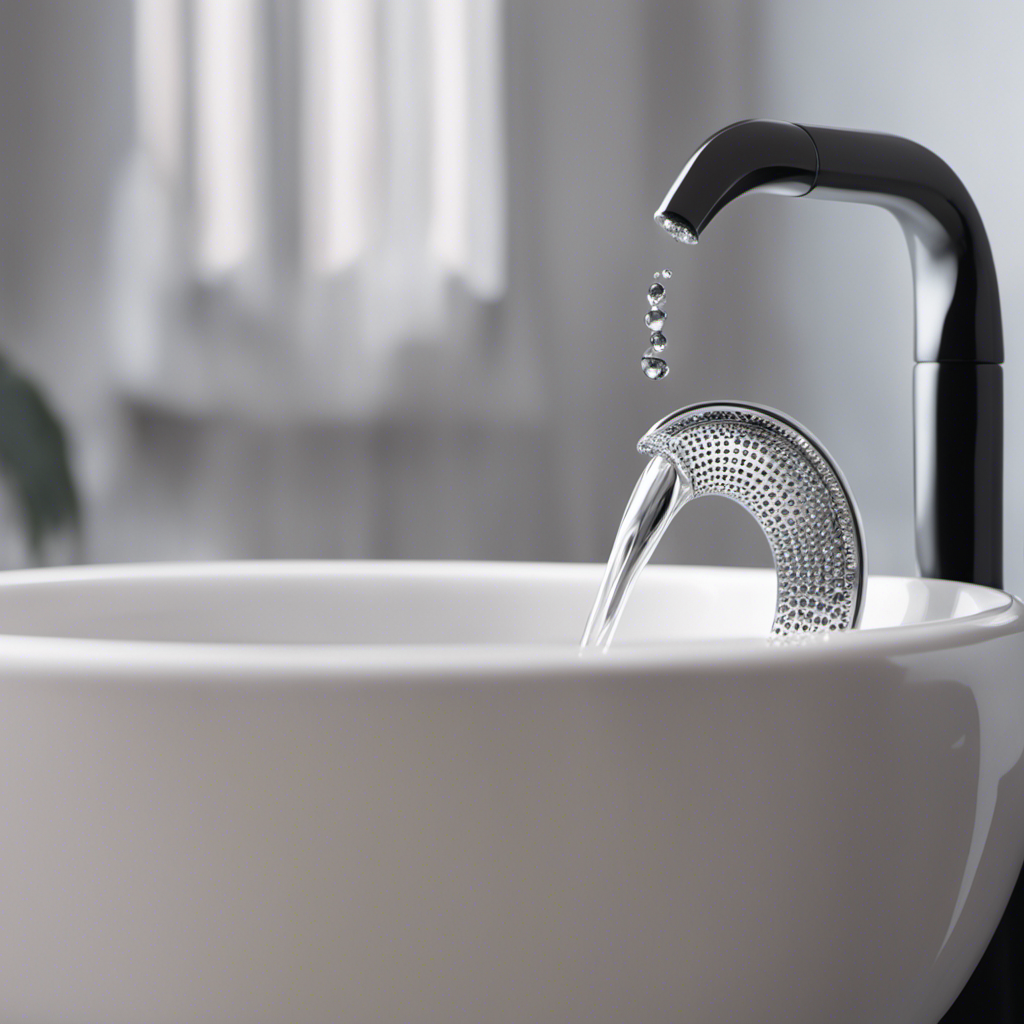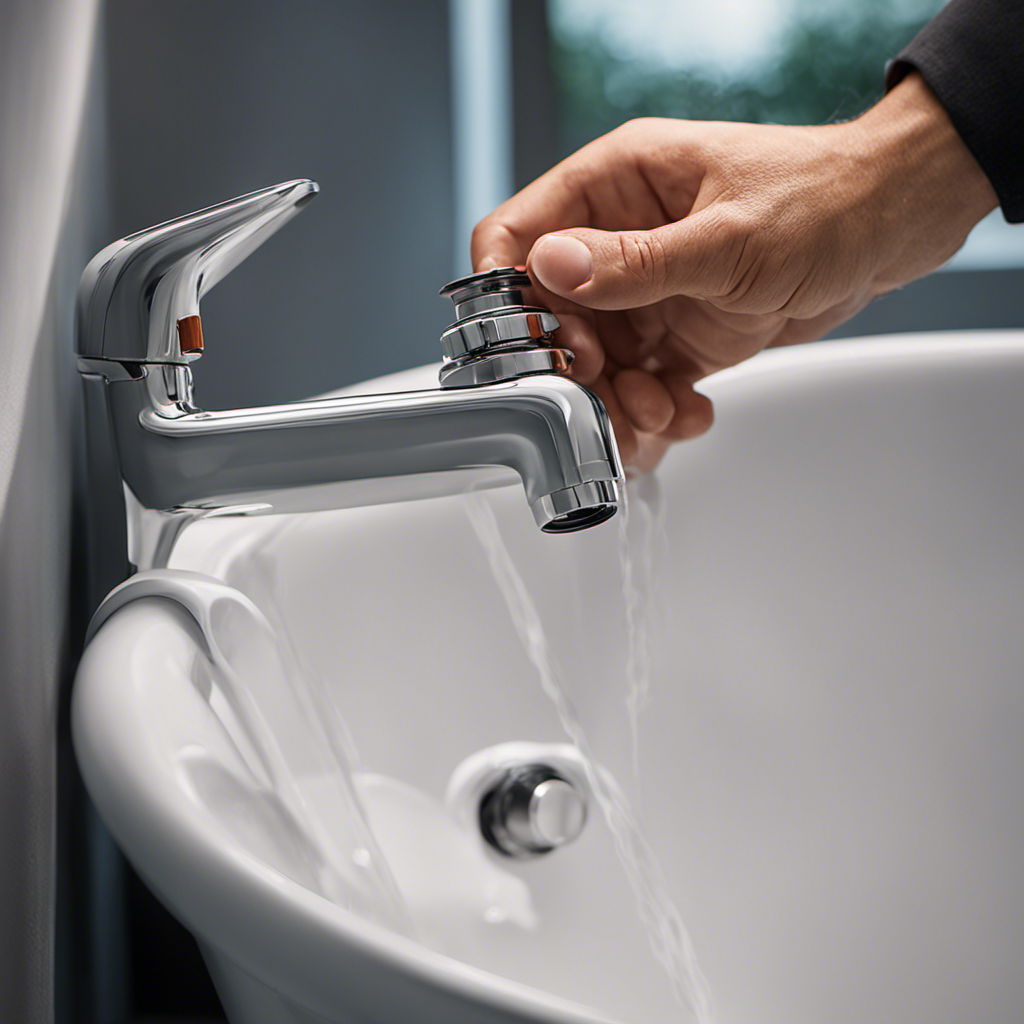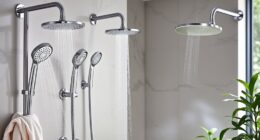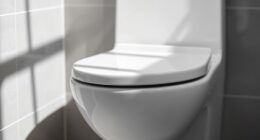Did you know that a clogged bathtub drain can lead to water damage and costly repairs? Well, fear not!
I’m here to share some simple and effective ways to block your bathtub drain without a plug. In this article, I’ll guide you through various methods, from using an old rag or cloth to crafting your own homemade drain blocker.
With these easy techniques, you’ll be able to prevent water from draining and avoid any potential plumbing problems.
Let’s dive in and get your bathtub drain blockage-free in no time!
Key Takeaways
- Using a cloth or rag is a simple and effective method to block a bathtub drain without a plug.
- Using a plastic bag and rubber band is a cost-effective alternative that allows for adjustable water levels.
- Using a suction cup provides a temporary seal, but may not be as durable as a traditional drain plug.
- Using a wet washcloth is a convenient option that can be easily secured in place for effective drainage blocking.
Using an Old Rag or Cloth
You can easily block your bathtub drain without a plug by using an old rag or cloth.
To do this, start by removing any debris or hair from the drain.
Next, take a clean rag or cloth and fold it into a small square or rectangle shape.
Place the folded cloth over the drain, making sure it covers the entire opening.
Press down firmly to create a seal.
This method works well for temporarily blocking the drain, but may not be as effective for long-term use.
If you’re looking for a more permanent solution, you can consider using a silicone drain stopper or even a ball of aluminum foil to block the drain.
These options provide a tighter seal and can be easily removed when needed.
Using a Plastic Bag and Rubber Band
Using a plastic bag and a rubber band is an effective way to seal off the bathtub drain. This method is simple and requires minimal materials. Here are some key points to consider:
- It is a cost-effective alternative to buying a drain plug.
- The plastic bag creates a tight seal to prevent water from draining out.
- The rubber band helps secure the bag in place, ensuring it doesn’t slip off.
- This method is easily adjustable, allowing you to control the water level in the bathtub.
- However, it is important to note that using a plastic bag and rubber band may not be as durable or long-lasting as a traditional drain plug.
Transitioning into the next section about using a suction cup, let’s explore another method for blocking a bathtub drain without a plug.
Using a Suction Cup
To create a temporary seal in the tub, attach a suction cup to the drain. This is one of the alternative methods for unclogging a bathtub drain. Using a suction cup as a temporary drain blocker has several benefits. Firstly, it is a simple and inexpensive solution that can be easily found in most households. Secondly, it provides a tight seal, preventing water from leaking out of the tub. This is especially useful if you don’t have a conventional drain plug available. Additionally, the suction cup can be easily removed when you’re done, allowing the water to flow freely down the drain. It’s important to note that while a suction cup can provide a temporary solution, it may not be as effective as using a proper drain plug for long-term use. However, in a pinch, it can be a handy alternative.
| Benefits of Using a Suction Cup as a Temporary Drain Blocker | |
|---|---|
| Simple and inexpensive | Provides a tight seal |
| Easily found in households | Prevents water leakage |
| Easy to remove | Allows water to flow freely |
| Handy alternative in a pinch | May not be as effective as a proper drain plug |
Using a Wet Washcloth
Attaching a wet washcloth to the drain can create a temporary seal in the tub. Using a wet washcloth as a bathtub drain blocker has both advantages and disadvantages.
Here are some tips for ensuring a tight seal when using a wet washcloth:
- Wet the washcloth thoroughly before placing it over the drain. This will help create a better seal.
- Make sure the washcloth covers the entire drain area to prevent any water from escaping.
- Press down firmly on the washcloth to ensure it is securely in place.
- Use a heavier washcloth or double up on layers for added effectiveness.
- Regularly check the seal to ensure it remains tight and doesn’t come loose during use.
Advantages of using a wet washcloth include its accessibility and affordability. It’s a simple solution that can be easily found in most households. However, it may not always provide a completely watertight seal, leading to some water leakage.
Using a Homemade Drain Blocker
If you want to create a temporary seal in your tub, try making a homemade drain blocker.
Using a homemade drain blocker has several benefits compared to a traditional plug.
First, it is cost-effective as you can easily make it using household items.
Secondly, it allows you to control the amount of water drained from your tub, which is especially useful if you want to soak your feet or let the water level rise slightly.
To create a durable and effective homemade drain blocker, follow these tips.
Use a plastic bottle cap or a small plastic container as the base.
Cut a hole in the center to fit over the drain.
Then, use a waterproof sealant or adhesive to secure the base to the drain.
Finally, place a heavy object on top to create a tight seal.
With these simple steps, you can enjoy a sealed tub without the need for a traditional plug.
Conclusion
In conclusion, blocking a bathtub drain without a plug is a simple and practical solution to avoid water from draining out. Whether you use an old rag, a plastic bag and rubber band, a suction cup, a wet washcloth, or a homemade drain blocker, there are various options available to suit your needs.
For example, Sarah, a busy working mom, used a plastic bag and rubber band to block her bathtub drain when her kids wanted to enjoy a long, relaxing bath. It worked like a charm and prevented any water from escaping, allowing her kids to have a fun and enjoyable bathing experience.










